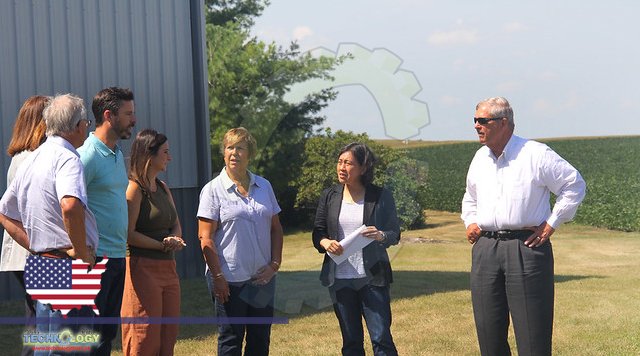The U.S. Department of Agriculture will distribute up to $550 million to expand certain farmers’ access to land, money and markets and to create educational opportunities for the students of higher-education institutions that cater to racial and ethnic minorities.

“The idea here obviously is to enlarge the number of people that are engaged in this very important occupation and calling,” U.S. Secretary of Agriculture Tom Vilsack said Wednesday during a call with reporters. “Why? Because we have an aging farming population. Why? Because we want to build a vibrant local and regional food system that is more resilient than the system we had as exposed by the pandemic. Why? Because we think it helps economic opportunity in rural communities and small towns.” The new federal funding opportunities were born by two wide-ranging spending bills — the American Rescue Plan and the Inflation Reduction Act — and would devote up to $300 million for projects that help “underserved” farmers. Those generally have included agricultural producers who have had no or limited assistance from USDA programs in the past, including new farmers and ranchers, those with low incomes and those of racial or ethnic minorities. The USDA seeks proposals for projects that are “innovative and help move underserved producers from surviving to thriving.” The application deadline is Oct. 28.
Concurrently, Vilsack said the USDA is working to provide billions of dollars of debt relief to struggling farmers and indicated that about one-fifth of USDA farm loans are or have been delinquent.
Also on Wednesday, the USDA announced up to $250 million of funding for minority-serving colleges and universities to help educate food and agriculture professionals, especially those who eventually work for the federal government.
Eligible applicants are 1890 land-grant institutions, 1994 land-grant institutions, Alaska Native-serving institutions, Native Hawaiian-serving institutions, certified Hispanic-serving institutions and Insular Area institutions of higher education located in the U.S. territories.
Some of that money will support internships and fellowships that place students in workplaces, including at the USDA.
“There’s roughly 120 scholars this year that are being assisted and helped under existing programs at USDA, which is, I think, a record number,” he said.
The country’s agricultural industry as a whole is aging, he warned. The most-recent Census of Agriculture in 2017 revealed that the average age of all farmers is 57.5 years, and that 8% of farmers are younger than 35. The results of the 2022 census are expected to be published in 2024.
“It’s really necessary and important for us in the food and agriculture industry to continue to look for ways in which we can recruit, train educate and attract the next generation of leaders at USDA and in the food and agriculture industry,” Vilsack said.
He said the new funding is “historic and part of USDA’s unwavering commitment to advancing equity for all.”
The notice of funding opportunity will be available at grants.gov in the coming days.
Vilsack called the recent legislation “the largest investment in conservation since the Dust Bowl” thanks to its $18 billion of additional funding for existing USDA land conservation programs.
The Inflation Reduction Act also includes considerable funding for forest management, drought mitigation and renewable energy projects in rural areas.